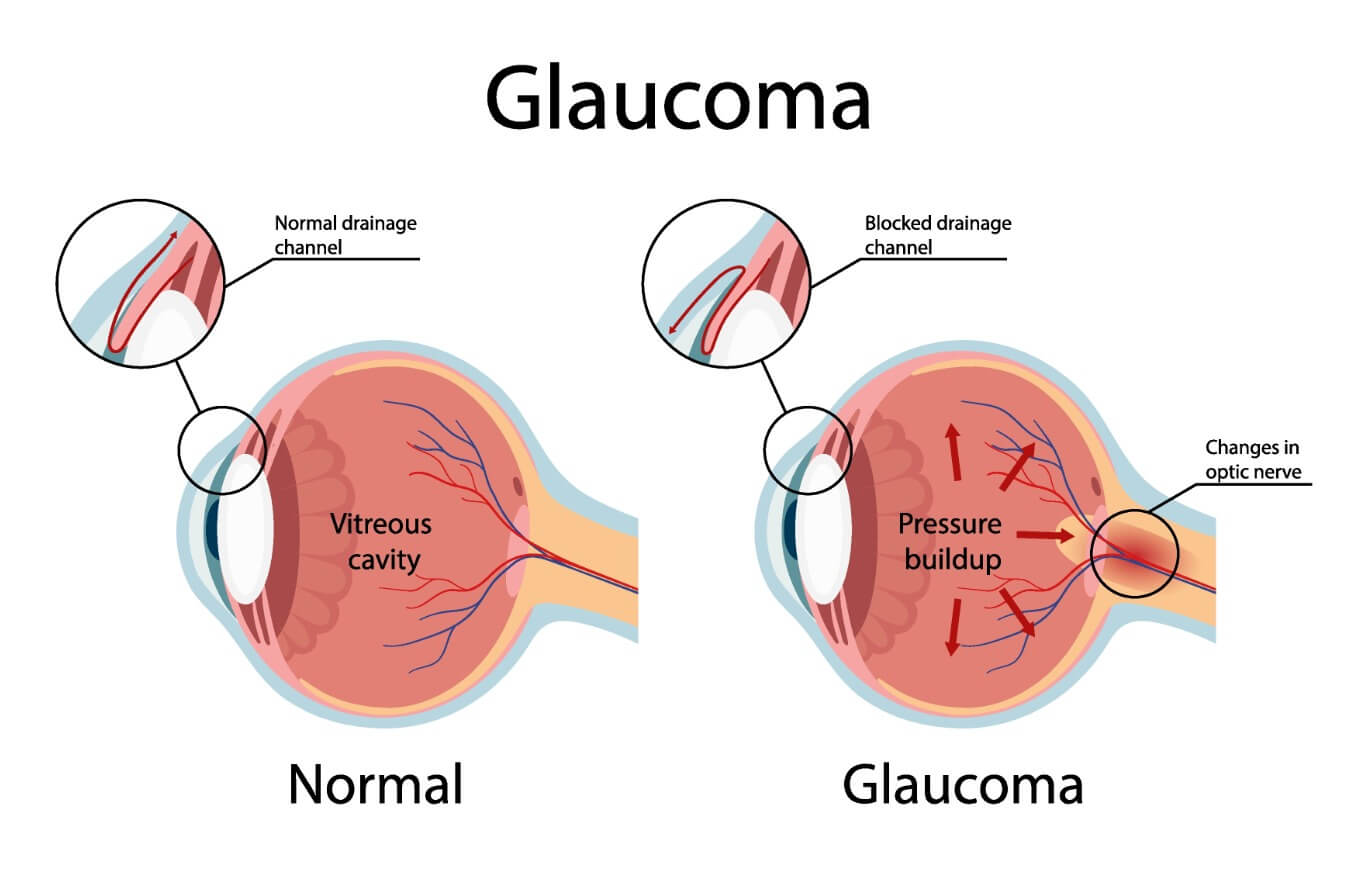Glaucoma symptoms and signs

The signs and symptoms of glaucoma vary, depending on which form of the disease you have.
The first sign of glaucoma is usually high pressure inside the eye. Most of the time, you won’t notice any symptoms until the optic nerve is already damaged and vision loss occurs.
Fortunately, with a timely diagnosis and treatment, there’s a good chance you’ll be able to keep the vision you have.
There also is a sudden-onset form of glaucoma (acute angle-closure glaucoma) that can cause very painful symptoms and requires immediate medical treatment.
Symptoms of glaucoma
Here are the signs and symptoms of each type of glaucoma:
Primary open-angle glaucoma
About nine out of 10 glaucoma patients have primary open-angle glaucoma, also called POAG. This type of glaucoma usually doesn’t cause noticeable symptoms until your eyesight is affected.
Even when vision loss begins, it can be hard to notice right away. This is because the first symptom of POAG is often peripheral vision loss, to the sides of your central eyesight.
However, your eye doctor can detect signs of open-angle glaucoma in your regular eye exam before vision loss occurs, including:
Elevated eye pressure
Optic nerve damage or suspicious appearance of optic nerve
If these signs are detected, your eye doctor may refer you to a specialist for a more thorough examination and testing, which typically includes fundus photography (photographs of the retina and optic nerve) and visual field testing (to test your peripheral vision). These are used to track progression of the disease and make treatment determinations.
Narrow-angle glaucoma (angle-closure glaucoma)
Narrow-angle glaucoma is a form of glaucoma where the drainage channel (or drainage angle) that allows fluid to drain normally from the inside of the eye becomes restricted, cause eye pressure to increase.
This is a concern because narrow drainage angles increase the risk of the drainage channel becoming blocked, causing a very significant increase in eye pressure and high risk for optic nerve damage.
If blockage of the drainage angle occurs, narrow-angle glaucoma usually is called angle-closure glaucoma. This blockage can occur gradually (chronic angle-closure glaucoma) or suddenly (acute angle-closure glaucoma).
Acute angle-closure glaucoma is a medical emergency and eye pressure needs to be reduced within hours to prevent nerve damage and vision loss.
Symptoms of acute angle-closure glaucoma include:
Sudden, intense eye pain
Nausea or vomiting
Blurred vision
Red eye(s)
Severe headache
If you experience these symptoms, seek medical attention immediately.
READ NEXT: Glaucoma Awareness Month
Secondary glaucoma
There are many types of secondary glaucoma. Each one is caused by a different illness, injury or condition.
Every form of secondary glaucoma comes with its own set of symptoms, but they usually resemble open- or narrow-angle glaucoma.
Developmental glaucoma
Rarely, children are born with developmental glaucoma, which can also be called congenital, childhood or pediatric glaucoma. It can be noticeable at birth, but not always; sometimes children aren’t diagnosed until several years later. Developmental glaucoma can also be secondary, as the result of an underlying childhood illness or injury.
When symptoms are visible, they include:
Cloudy eyes
Eyes that look bigger than normal
Eye tearing
Light sensitivity
If you have questions about glaucoma or believe you or your child may be at risk, ask your eye doctor for more information.
See Related: Glaucoma Treatment Options
Page published on Thursday, July 23, 2020






